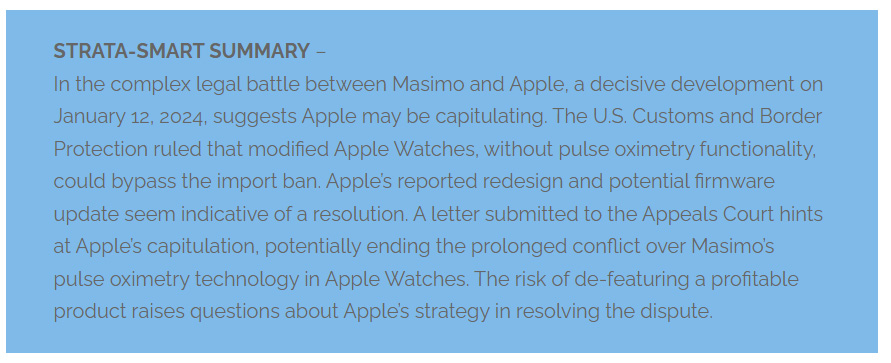
For reasons I’ll explain in some detail below, I recently posted a story that was not entirely as it seems. Since I deeply value my relationship with Strata-gee readers and always strive to bring you the absolute truth, I have decided for the sake of transparency to explain to you what I did and why I made the choices I made. You can decide for yourself if you feel that I did the right thing.
See how I tricked you in a recent post on Strata-gee
Certainly one of the biggest tech stories over the last couple of years has been the rapid emergence of generative AI, such as ChatGPT and Google Gemini. I have been experimenting with generative AI for some time now. Some of you may have figured that out, as my experiments have been influential in several Strata-gee stories.
It has always been my intention to reveal my plans with generative AI, based on the results of my tests. So far, I’m still in test mode, so I have not formally launched any major AI initiative at this time.
Some Readers Caught On
However, recently, a few readers became aware of – or at least strongly suspected – that generative AI was employed in one of my stories. For this reason, I have decided to reveal my testing of generative AI, let’s call it a beta test.
Let me say this upfront – should I ever choose to employ generative AI on Strata-gee.com on an ongoing or expanded basis, it would solely be implemented for the purpose of enhancing the depth, detail, and accuracy of any story into which it was implemented. It is possible to use AI for less honest purposes, for example, to generate what’s known as deep fakes, generally for the purpose of misrepresenting a situation or creating a false scenario that never happened.
I would never seek to use AI for such purposes. I have conducted testing of AI for both textual and visual content generation. So let me walk you through a couple of these experiments…
Generative AI for Content: Strata-Smart Summary
On several stories, you may have seen something called a Strata-Smart Synopsis or Strata-Smart Summary. As you most likely know, Strata-gee is renowned for its long-format journalism with stories sometimes running as long as 3,000 words or more. This depth of content can be daunting for some readers, including those who may choose not to read it because it might contain information not important to them. You know, the TL;DR crowd. With this being the case, I tested the concept of using generative AI to create a short summary of some of my longer articles, such that the reader could quickly scan the summary to ensure that this story contained topics that they would want to consume.
You can see a sample below of a Strata-Smart Summary used in a story from this past January, titled Massive Masimo vs. Apple Legal Battle Has Epic Day; Is Apple Capitulating? The story itself is about 2,100 words long and ChatGPT generated a 93-word summary that touched on all of the key points.
A ChatGPT 93-Word Summary of a 2,100-Word Post

Given that ChatGPT, like all AI systems, is prone to have “hallucinations,” I read and edited each and every one of the AI-generated article summaries in my AI test to confirm the accuracy of the summary and to ensure that nothing inappropriate or inaccurate was ever published. Generally, I was quite impressed with the quality of these summaries and was prepared to make them official for all longer stories.
Surveyed Readers Said the Summary was Unnecessary
Summaries like this one already exist in somewhere around a dozen Strata-gee stories. However, after surveying several Strata-gee readers, the vast majority did not feel this summary was necessary, or that it added to their enjoyment of content on Strata-gee. In general, the feeling seemed to be that it simply added to the length of the story that they already intended to read anyway. And that fact made the summary seem duplicative and unnecessary.
For this reason, I ended that test. There will be no more Strata-Smart Summaries in future stories.
Generative AI Content for Visual Content
If Strata-gee has ever done a story on your company, you may have noticed that the images used in the story are generally high quality. In fact, even if your company supplied the images to Strata-gee, you may have noticed that sometimes those images looked even better on Strata-gee than compared to the same image seen on a different media site – or even on your own site. The reason for this is that, as a photographer myself, I regularly use Photoshop to touch up images, improve contrast, increase color saturation, dial in greater sharpness, or do whatever it takes to optimize the image.
Adobe, the creator and publisher of Photoshop, has been an early adopter of AI capabilities in their software products. I am testing a special Beta version of Photoshop with generative AI features built-in and have been experimenting with it for a few months now.
The Company Provided Photo was Sub-Optimal
You may recall that earlier this year, I wrote a story about a California-based rep firm called AV Partners. The company had provided a release about how the firm is growing, expanding its team, and successfully attracting more brands to represent.
With their formal release, the company had also provided a photo to accompany the story. In looking at that photo, I felt it was sub-optimal. They had provided a photo of its employees that was taken on the occasion of a visit to one of its vendors. That vendor was not a central part of the story. Standing alongside members of AVPartners was an executive of the vendor – again, who was not specifically a part of this story. They were standing in front of a building whose number and logos again were not immediately necessary for this story.
I Fired Up Photoshop with New Generative AI-Enhanced Features and It Manifested a Man’s Arm
So I fired up Photoshop’s AI features to see if I could transform the image into one that better supported the story. There were some challenges to getting this image to be closer to the one I really wanted. First, the logos on the building in the background were very close, or actually intersected with folks who were necessary to retain in the final image.
However, the biggest challenge was to remove the person standing at the left who is not part of AV Partners. Removing him would leave one of the members of the AV Partners team completely armless. Enter generative AI! As you can see in the final image below, not only was I able to remove the vendor employee on the left, but Photoshop’s new AI capability was able to generate a correctly dimensioned and positioned right arm for the AV Partner team member that completely matched the jacket style, texture, color, and proper position leaving this team member mostly whole!

Voilá…I Had the Image I Wanted
I went one step further and added the company’s logo and…voilá…I had the image I wanted. I would argue that the image was altered in a way that enhances its value to the story…and in fact is clearer and less confusing than the original photo provided. In my view, it almost perfectly supports the story visually.
What do you think? Is this fair use of generative AI? Or should I restrict all images to an exact reproduction of what has been provided? Let me know your thoughts in the comments below.





Love what you did there.
Thanks Paul!
Ted
Good thing the guy on the left didn’t have a prosthetic arm or hand.